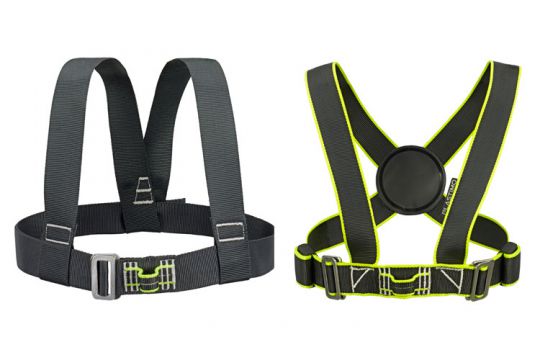Safety harnesses : How to choose a lanyard and a safety harness
Lanyards and harnesses: two mandatory safety items on board
An unbreakable link between you and your boat, the and the are an indispensable safety element on board. When the seas get rough, they'll keep your hands free to maneuver while keeping you safe as you move about the deck.
- The harness is the item you wear that surrounds your body to which the safety lanyard is attached.
- The lanyard is the element that connects the harness to the lifeline. It is usually attached by carabiner.
- A lifeline is a flat strap, or rope, stretched across your boat to which the lanyard carabiner attaches.
The obligation to have one harness and one lanyard per person on board applies from 6 miles from a shelter on a sailboat. For other types of boats, only 1 harness and lanyard are required on board.
Which lifeline to choose and how to install it?
Lifelines can come in several forms, but the two main categories are cable or flat strap. The latter is recommended for greater safety. Indeed, a cable will tend to roll under the foot while a flat strap will stick to the deck avoiding any risk of rolling.
The lifeline runs from the front to the back of the boat and allows safe movement from the cockpit to the ends of the deck. It must be attached to the anchor point provided for this purpose and each of its anchor points must withstand a load of 3 tons. It is important to attach it as far inside the boat as possible in order to be restrained before going overboard.
The different types of safety lanyards
The are divided into two main categories: the elastic lanyards and the classic lanyards. The former offer greater freedom of movement while the latter have a defined length that will not change depending on use. Here, the choice is yours according to your use and preferences.
For more clarity, we can further differentiate these categories by separating the lanyards according to the number of strands:
- A 1-strand lanyard is a single lanyard with a carabiner at each end, or 1 carabiner is a loop. They are very simple and will work in most cases. The belongs to this category. The standard length is 2 meters.
- A 2 strand lanyard will allow you to hang on as needed. If you need to move around the deck, hang on to each end of the lanyard. If you need to stop to maneuver and be secured, hang the lanyard at the shorter end with the other end. This is the case with the . The 2-strand lanyard also allows you to change lifelines without ever being detached. The standard length of a safety lanyard is 1 meter.
Choosing and equipping your harness
A harness should have a D-ring to attach the lanyard to. It is located in the front and can accommodate a loop such as a carabiner. Some harnesses have a loop between the legs for better support and therefore greater safety. There are standard non-adjustable harnesses but most are adjustable at the waist. The } for example is a very light and comfortable harness thanks to its X-shaped back shape with reflective stripes that adjusts both at the waistband and in the back.
Ideally, use a harness that is integrated with your lifejacket, so you save weight, are more comfortable and have only one piece of equipment to think about.
Most harnesses come in one size, but are adjustable within a certain range of chest size. It is important to keep this in mind when choosing your harness. A harness that is too large will not hold you securely enough and the security it provides will be greatly impaired. This is absolutely not recommended. A harness that is too small will not be comfortable and may become uncomfortable in the long run.
Maintenance of your equipment
If you think your harness is damaged (like any other element of this guide) or have any doubt, change it. Doubt has no place in safety. It will also be important to check that your lifelines and lanyards are in good condition before heading out to sea. Ideally, you should detach them and store them during the winter if you are not using your boat for greater durability.
The life span of the straps is generally 2 years.Carrying one or more spare carabiners on board in case one of yours is damaged can be a good idea. The will do very well and can also be used to integrate a carabiner into a fixed-point lanyard.
You can find all the elements mentioned above as well as all our other harnesses and lanyards on .
Have a nice surfing !
For any question or additional information, we are at your disposal at 04.78.41.79.31.
For any request of estimate or personalization of your equipment, thank you to contact us by e-mail.
The Nautisports. com team















